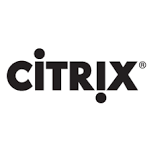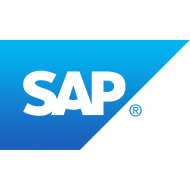Cognos – IBM Business Intelligence Performance Management Application.
Cognos is an IBM business intelligence performance management application that enables technical and non-technical staff in any firm to analyze, extract, and generate interactive dashboards that help the company make important choices. The Cognos tool combines a number of products to allow for contact with a variety of third parties. SAPs, relational databases, and other systems are examples. Cognos is a business intelligence-gathering platform that offers a scalable and self-service analytical solution for company purposes. Because of its highly dynamic nature, it’s an excellent tool for building user-friendly dashboards and reports for any business.
About The Company
Cognos began as a consultancy firm in 1969, founded by Alan Rushforth and Peter Glenister, and eventually expanded into software sales. Cognos was acquired by IBM on January 31, 2008, and the software suite’s history was preserved. It originated as a consultancy firm for the Canadian government, and its first software product, QUIZ, was released in 1979. Cognos switched its concentration from consulting to software sales during the Canadian recession of the 1980s. In 1982, it changed its name to Cognos from Quasar Systems Limited. The word “cognos” is derived from the Latin word “cognosco,” which means “knowledge gained by personal experience.”
It’s a sophisticated business intelligence tool that can be used for data mining, data analysis, event monitoring, and metric visualization. It provides a powerful analytics medium for any firm to foresee market trends and take relevant steps ahead of time, allowing them to stay ahead of the competition. It’s a business intelligence application that lets you create interactive dashboards so you can make better business decisions by anticipating market developments. Almost every organization now employs Cognos for their analytical work, as making vital business decisions at the appropriate time is critical to surviving in today’s competitive market.

Cognos has made working for businesses and organizations a lot easier, and here are some of the ways it does so.
- Artificial Intelligence and Machine Learning are used to fuel it, allowing it to generate future predictions and develop intelligent dashboards.
- It employs pattern detection to uncover hidden patterns in data that would otherwise go unnoticed or unanticipated in regular situations.
- Cognos’ ability to produce interactive dashboards in a variety of forms to meet corporate demands is one of its primary advantages. It allows stakeholders to study the charts in the way that they choose and aids in decision-making.
- Natural language processing is a technique for extracting data from unstructured text and making intelligent predictions. Cognos uses AI that is powered by natural language to let people get intelligent answers to their questions.
Growth
With an estimated 8% wallet share in the BI and analytics software industry, it is one of the top three players. IBM Cognos Analytics continues to grow at a rapid pace, setting new standards for its competitors. Fortune 100 corporations prefer IBM Cognos, and it is used by some of the world’s most powerful organizations.
IBM Cognos has approximately 31400 clients in all major US regions, and BARC has dubbed it a market leader in integrated planning and analytics portfolios.
IBM Cognos provides significant capabilities for a variety of BI applications, including web-based OLAP analysis, structured reporting, ad-hoc reporting, and dashboards. IBM Cognos manages everything from data modeling and integration to exploration and visualization as an all-in-one platform. It’s an excellent solution for managing massive data volumes and supporting the needs of multiple users at the same time.
Rob Ashe- Ceo
Bridge Growth Partners’ Rob Ashe is an Executive Partner. He was the company’s previous President and Chief Executive Officer after joining in 1984. He was named President in 2002 and CEO in 2004, and he held both positions until IBM bought the company for $4.9 billion in 2007. After the acquisition, he worked at IBM as the General Manager of Business Analytics until 2012.
Mr. Ashe held many top executive positions at Cognos before becoming President and Chief Executive Officer, including Senior Vice President (“SVP”) of Application Development Tools, SVP of Products, SVP of Worldwide Customer Services, and Chief Corporate Officer, and Chief Financial Officer. He has served on Bridge Growth Partners LLC’s Technology Advisory Board. He has a Bachelor of Commerce in Accounting and an Honorary Doctorate from the University of Ottawa. Rob is a business visionary, a successful corporate leader, a community-minded influencer, and a proponent of higher education’s value and growth.

I am a second-year student pursuing Liberal Arts from Nmims. I am a painter, I love reading and have a great interest in cooking. I am also a trained kickboxer. I’ve always had a passion for writing and hence in my free time, I work as a freelance writer.






